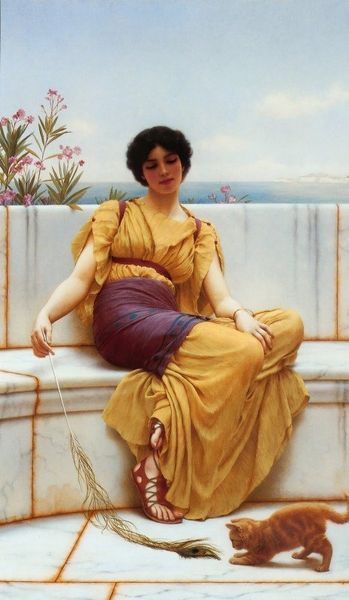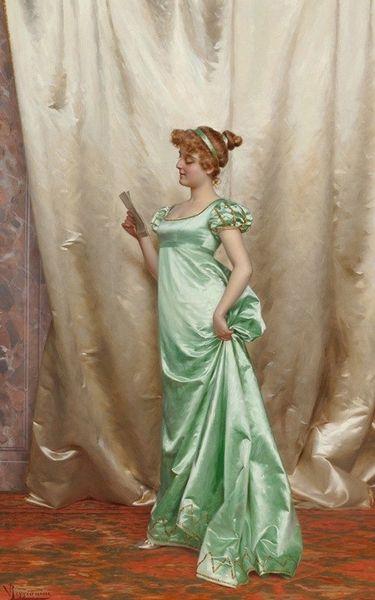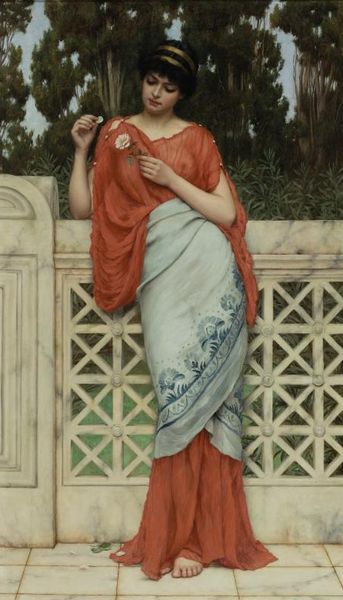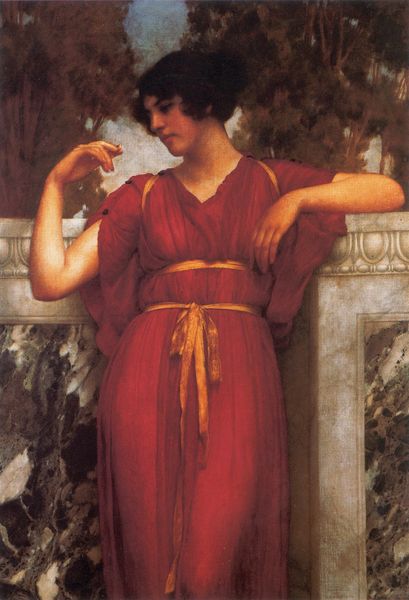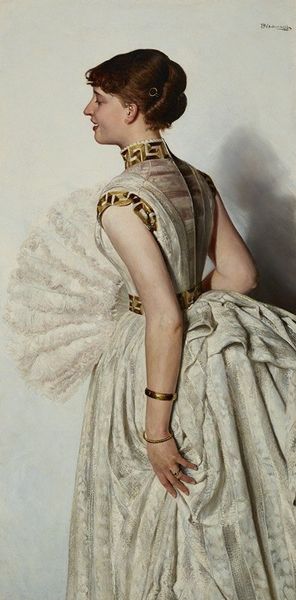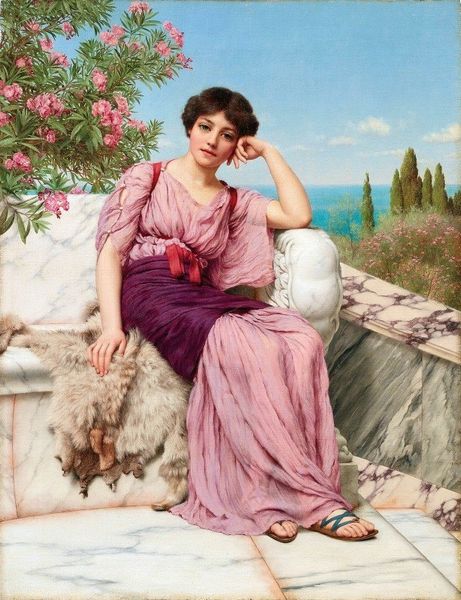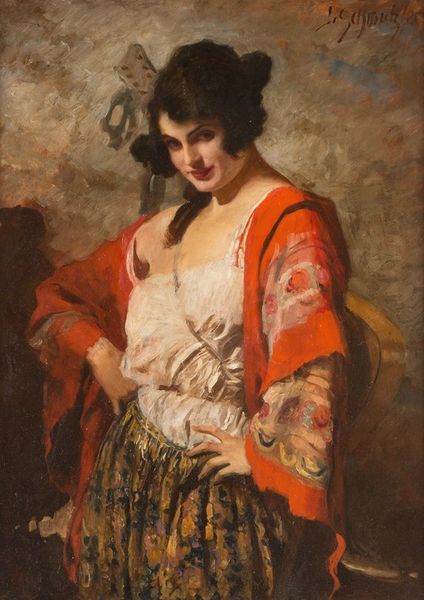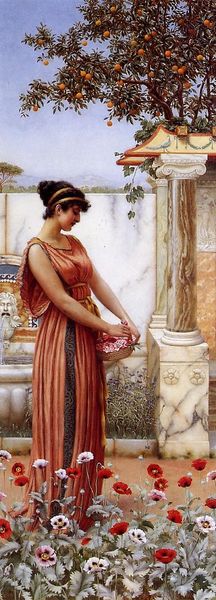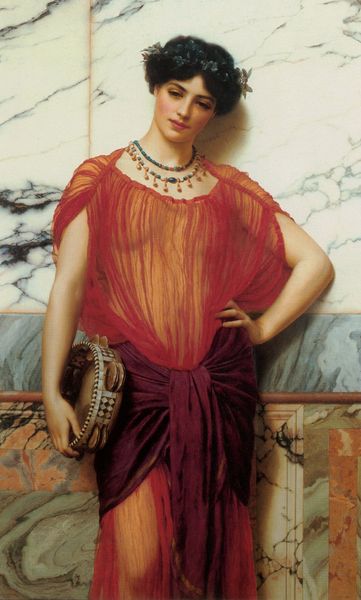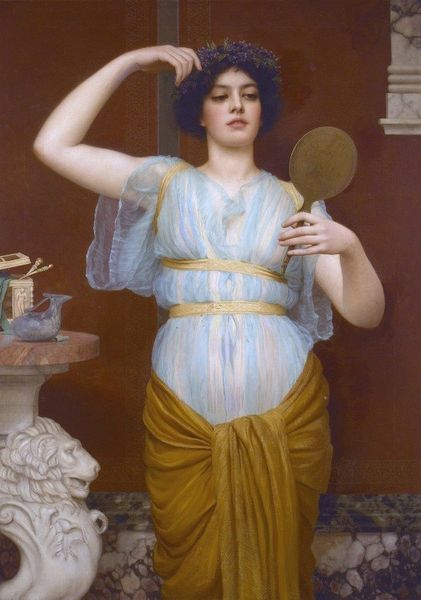
Copyright: Public Domain: Artvee
Curator: I see quiet contemplation here. Such gentle sorrow, captured so vividly in her downcast gaze. Editor: Indeed. We're looking at "At the Fountain" by John William Godward, painted in 1893. It's an oil on canvas, a prime example of the artist's fascination with classical themes, and clearly indebted to plein-air approach. Curator: It’s interesting how he creates this air of timelessness. Is it a yearning for a past that never truly existed? The cool marble, the flowing drapery, and that beautiful profile. I almost feel as though I'm intruding on a private moment. Editor: Godward positioned himself, perhaps self-consciously, in opposition to the rising tide of modernism. This embrace of idealized beauty and historical subject matter speaks to the late 19th-century art world's ongoing dialogue between tradition and avant-garde. He seemed determined to resist what he viewed as the ugliness of modern life. Curator: There’s definitely a constructed artificiality, isn't there? Like a beautiful scene from a play. All this theatricality – it is also slightly disturbing for my eye, though – if one sees her naked through this almost transparent clothes, doesn’t seem fair or balanced enough… Editor: Precisely. It's this staged authenticity that becomes a subject of historical and critical analysis, don't you think? These depictions reinforced certain notions of femininity and classical antiquity within a specific socio-political context. One has to ask, whose idea of beauty is being perpetuated here, and at whose expense? Curator: True, but what is this expense really about…? Even as you describe it I let it go because… just see that marble work there in the painting’s architecture: divine in and of itself! If the question stays with me – why wouldn’t one just celebrate this very image and stay quite put? It keeps us both occupied. Editor: So, beauty as distraction? Perhaps. Godward certainly provided an alluring escape for his contemporary viewers. "At the Fountain," therefore, is a visual artifact not just of aesthetic preference, but also a reflection of its time, caught between embracing the future and romanticizing the past. Curator: Very astute. And somehow, even knowing that, it continues to draw me in with that sorrowful beauty, which seems, despite itself, like an almost holy vision to dwell upon.
Comments
No comments
Be the first to comment and join the conversation on the ultimate creative platform.
